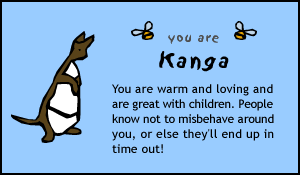
In Canada, October is Autism awareness month. It's important to make people aware of those who suffer from Autism Spectrum Disorder. My oldest grandson, Brandon is one of these children. He has been officially identified with Pervasive Development Disorder. In other words he has Asperger's Syndrome. If you have never heard of Asperger's Syndrome, click
here. The information found on this page is just the tip of the iceberg. You can find additional information at
Autism Society Canada.
It is said that children and adults (not diagnosed as children) look at things much differently than most people. Compare it to us looking at a tapestry. We see the entire thing. A person who has Asperger's Syndrome, sees every single thread. They often hear background noise before noise in the forefront. They have a different outlook on things. They have trouble trusting at times. They don't like change. These are just some of the problems that those with Asperger's experience.
Brandon has come a very long way in the last four years. He had a very difficult time when he was younger. He had no social skills, could not communicate well, didn't understand body language and would not look you in the eye. Though he still lacks social skills, he communicates better, can understand most body language and will almost always look you in the eye. There is an odd time that he has to be reminded. All of these things had to be taught to him. We played games with him to learn him facial expressions and other body language. We had to pump him for information because he didn't know how to express himself. However, all of our work paid off. Some kids aren't so lucky.
Brandon has what is called "high functioning" autism. He does very well academically, with outstanding marks in most subjects. However, if he can't "get" something, it is very difficult for him. Then suddenly when he does "get" it, it's like a light is turned on. Once he knows something, he doesn't forget it. However, he is very hard on himself because he thinks that he should accomplish perfection and as we all know, this is impossible. Aspies, as children who suffer from Asperger's are called, have a difficult time when they can't get things right the first time.
There are different levels of Asperger's Syndrome. Brandon's is a mild case so they inform us. However, he has trouble controlling his emotions. When he is excited, he moves constantly. When he is thinking or a little down, he is silent. When he gets upset, he goes off by himself. He likes quiet time to think. When he gets angry, which isn't often, he gets very angry. He does things that are annoying at times, like repeating himself. He will say something to someone and then whisper it to himself. Sometimes he makes noises that he may or may not know he's making.
Brandon started animal therapy in March. He goes once a week and it has done him a world of good. The counsellor at the farm says that he is almost ready to step-up a level. He is learning to control his emotions, make friends and work as part of a team. He loves the animals and enjoys going to the farm. It's something he looks forward to. He's held baby goats in his lap, picked up a kitten that was only 24 hours old and held a baby chick. He has learned to climb a fence, get on and off of a trampoline and a host of other things that he couldn't do in March of this year.
Brandon doesn't like sports. He has poor motor skills and doesn't always put proper emphasis on words when he's speaking. However, since attending the farm, these skills have greatly improved.
I'm telling you all this to emphasize how much children with Asperger's Syndrome and Autism need people to support and love them. The child that is throwing a temper in the doctor's office may have Asperger's Syndrome. It may not be a temper tantrum at all - possibly that child's emotions are so overwhelming that he is having a meltdown. These can last anywhere from a few seconds to hours. Please, don't be quick to judge.
Tony Attwood is one of the most knowlegeable doctors in the world on the subject of Asperger's Syndrome. Be sure to visit his website to learn more about this invisible disability.
Note: Asperger's Syndrome is found in both males and females, though it is more predominant in males. Many children who were once thought of as geeks or as being weird probably had some form of Asperger's Syndrome, though not many were diagnosed before the early 90s in North America.























